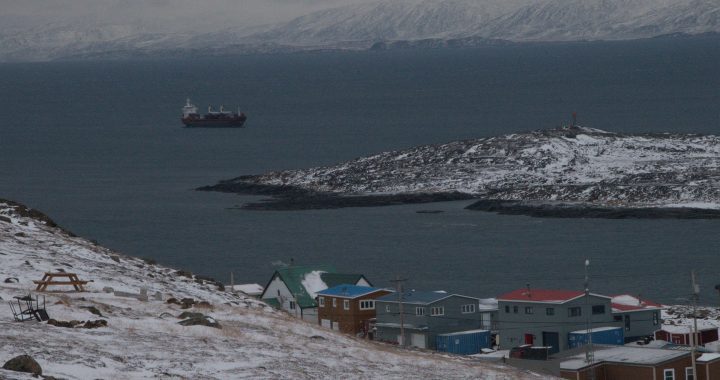A proposed hydro-electric expansion project in northern B.C., which would be owned and operated by a development company under the Taku River Tlingit First Nation, is not sitting well with local residents.
“Really, it’s not worth it for the town of Atlin and the feelings of division it’s creating,” says Atlin resident Judi Urquhart.
The Taku River Tlingit First Nation is located within Atlin, a small community of about 480 people located 175 kms south of Whitehorse, Yukon.
The Atlin Hydro Expansion Project would be separate from an existing upper hydro-power facility on Surprise Lake, which supplies most of Atlin’s power. A new lower power plant would be constructed roughly 300 metres from Pine Creek Beach on Atlin Lake.
The project is expected to cost around $206 million and would help push Atlin’s current capacity of 2.1 megawatts by 8.5 megawatts, for a total of 10.6 megawatts.
Tlingit Homeland Energy Limited Partnership, a subsidiary, would sell the additional energy created from the lower plant to Yukon Energy. Profit generated from the project would go back to the First Nation.
Pending several applications and permits, the project is expected to be up and running by the fall of 2024.
But people like Urquhart are having serious reservations about the lower part of the project.
Urquhart lives 200 meters from the proposed lower site and worries its location will cause environmental disruptions to the area.
She says water will have to be diverted from Pine Creek to feed the lower end of the project.
“After the upper two generators there will have to be pipes or whatever that are going to have to divert the water down to the lower generator. There’s going to be a substantial amount of water that is going to be diverted.”
She notes the water diversion will result in 50 per cent less water than at the lowest water levels at Pine Creek Falls, an area popular with locals and tourists. She says local residents are concerned low water levels may impact their wells.
Urquhart says the greatly reduced flow of lower Pine Creek will impact wetlands near the Pine Creek Flats and mouth of Pine Creek.
“It’s also going to be drying out here, and the vegetation’s going to die off. That is a real area of nesting birds and moose and deer and bear; we have all of those animals down there on those lands.”
She also worries noise will be an issue due to her property’s close proximity to the powerhouse.
“(The partnership) has said they’re going to try and dampen the sounds just as much as possible, and I believe they will try, but technology can’t do everything,” she says.
Urqhart notes a 25-metre wide right-of-way will also have to be constructed that will follow Pine Creek beside Monarch Mountain. The right-of-way will pass two subdivisions and result in extensive clear-cutting of forest and jack hammering of bedrock.
Urqhart says the construction will devastate the adjacent areas, and wipe out part of Pine Creek Trail.
“It’s going to be a corridor for all recreational vehicles – winter and summer- behind people’s residences and across from them,” she says.
Peter Kirby, a band member and president and CEO of the partnership, is aware of the public’s concerns. He says care is being taking to address them the best way possible.
“We’re committing to monitor the impact of the hydro expansion. We’re committing to monitor wildlife, fish, anything that people want basically,” he says.
Kirby says several people, including himself and his nation, have raised concerns over water diversion and how will it affect wetlands.
However, he says scientific studies show the concerns are unfounded.
“At the end of the day, wetlands, some people don’t understand what a wetland is so they call it a wetland and, in fact, it’s not. But that doesn’t diminish our intent to address the impacts as they arrive.”
He says noise, too, should not be an issue with the lower powerhouse.
“The powerhouse that we will build on the lower powerhouse will have every conceivable sound measure built into it,” he says. “What the science has told us in previous installations of powerhouses is this is a manageable impact.”
Paul Lucas, of Atlin, also opposes the project.
He says a few years ago local residents were shocked when the project’s proponents blasted bedrock to see if the lower powerhouse could be situated near Pine Creek Beach.
“The first time we found out about the project is when they did the blasting without telling anybody, completely ad hoc blasting, and blew out people’s windows in their houses. And from then on it’s just kind of gone downhill.”
Lucas says the proposed site for the lower powerhouse is in an environmentally sensitive area, which also functions as a recreational spot. He says the area adjacent to his property as well as two others will be clear-cut to accommodate a power line and service road. A penstock, a pipe carrying water to the plant, would also need to be constructed.
He says the lower powerhouse and its accompanying tailrace, a channel where water would flow out of the powerhouse, is projected to be built in an area designated “high value recreation and environmental”, according to a land use plan adopted by both the First Nation and town of Atlin.
Lucas also questions the proposed output of the lower project that is expected to generate 2.8 mega watts of power. He says Dawson Creek spent $200 million on the Grizzly Bear Wind Creek Project that has an output of 102 mega watts.
“(For) 2.8 megawatts power, they’re going to actually clear-cut this entire area, blast thousands of tons of rock, drive a penstock into a recreational and environmental area, build a power plant meters from people’s residences, and pump a pool of warm water into Atlin Lake,” he says. “You could get people with Fitbits on running around the block (producing more).”
Both Urquhart and Paul say they support the overall project and want to see the First Nation prosper, but would like to see the lower powerhouse moved further upstream or cancelled altogether.
“We want to see this go ahead, we want to see the Taku River Tlingit thrive, they’re part of our community. But this lower part has become very corrosive,” Urquhart says.
Concerns being addressed
As for Lucas’s concern, the lower powerhouse will produce little power for potentially immense environmental disruption, Kirby says every piece of energy infrastructure is needed for the project.
“What people need to understand is this is an expensive project, and so any time there’s an expensive project, you need to generate as much revenue as you can. Every little bit of energy that we can derive from the opportunity our resources provide us, we need to do that,” he says.
According to the partnership’s website, it likewise states the lower powerhouse is consistent with the Atlin Taku Land Use Plan.
“It is (Tlingit Homeland Energy Limited’s) view that the proposed project meets the spirit and intent of the (Atlin Taku Land Use Plan), and we did not identify any examples of the AHEP contradicting the management direction of various zones and land use designations identified in the Plan,” it states.
“However, it is ultimately the role of governments to determine whether proposed projects conform to the management direction outlined within a land-use plan.”
Kirby says the project’s proponents have also been willing to address residents’ concerns by moving the initial site of the lower powerhouse.
“In this particular instance, folks said they didn’t want (the lower powerhouse) too close to Pine Creek Beach because that’s our only beach around. Fair enough. We live here. We understand that. We moved it back,” he says.
Kirby believes the proposed lower powerhouse site is far enough back from the beach that it won’t be seen or heard. He says power generation will also only take place in the colder months when the beach is not being used.
He says plans to place a surge pipe on Monarch Mountain near Pine Creek Beach were also changed due to pushback from locals.
Kirby admits the project’s proponents “could be better communicators,” but says the issues being raised from residents are being taken seriously.
“We are doing everything we can to address everybody’s concerns, and as Atlinites, we want to be able to stand with our fellow Atlinites in the future and with generations in the future knowing we did everything that we could to address every concern that we could that anybody raised,” he says.
Kirby says it’s also important to remember there will be major benefits from the project, such as reducing greenhouse gas emissions by 27,400 tonnes annually, along with employment, training and investment opportunities.
“I think if anybody pulls out of the personal, the local, and looks at what does this project mean for the world, for the region and for future generations, there’s no question this is a wonderful project,” he says.
Despite commitments to pursue the project in a responsible way and respond to residents’ concerns, Lucas isn’t convinced.
“Mitigation shouldn’t be necessary,” he says. “If your vision of a project is to ram through a project and then mitigate the effects, without asking yay or n’ay, how do you feel about it,’ is not how you do business in my opinion.”
Leadership on board
Charmaine Thom, a spokesperson for the First Nation, says the project could greatly benefit her community if it goes forward.
“It could potentially be a really good project and support and fiscically support our citizens within the nation,” she tells APTN News.
Thom says she’s aware of the criticism, but “at some level you’re not going to be able to satisfy everybody.”
She says what’s truly important is taking care of the land before it’s too late.
“We all need to start taking care of the land, and we all need to start doing things differently where we’re not adding to the emissions. I feel like we’re moving in the right direction.”
In the coming months, the First Nation will decide whether or not to approve the project at an upcoming joint clan meeting – and under what conditions it will move forward.









